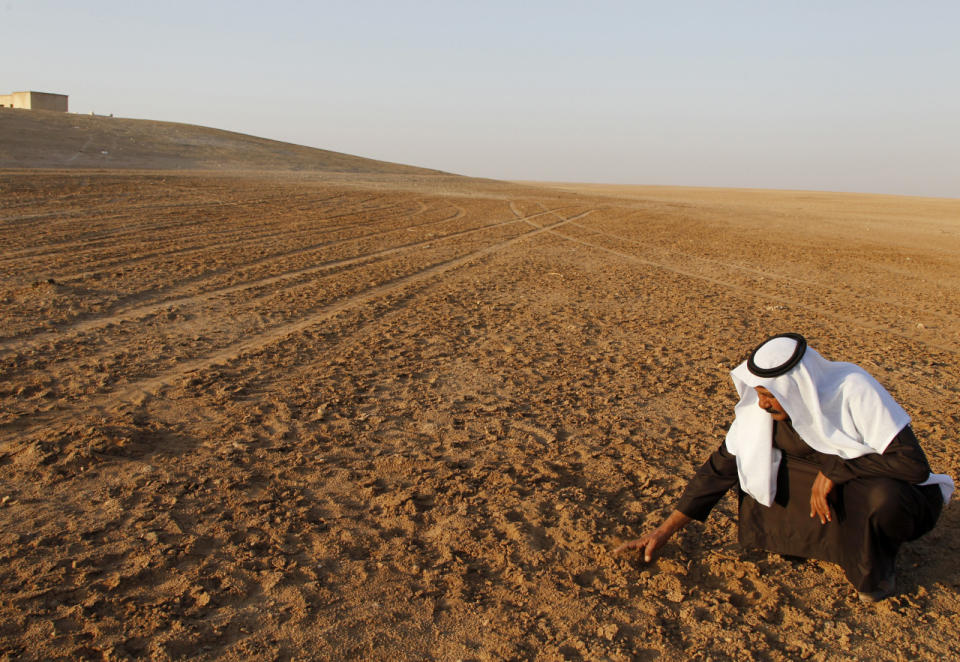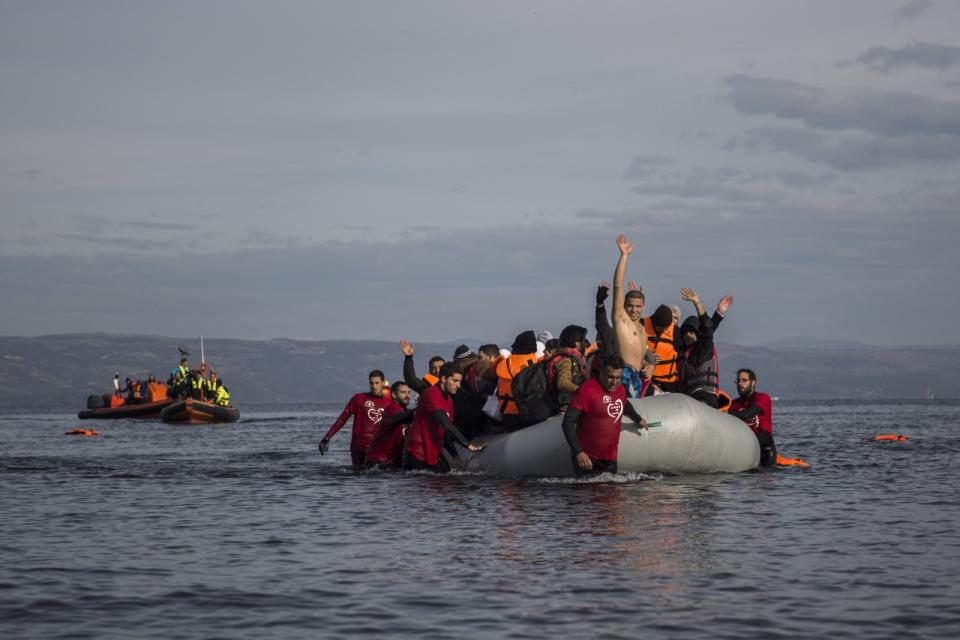Heat, drought and ISIS: Climate change as a ‘threat multiplier’
The link between environmental degradation and social collapse is a well-understood phenomenon — just ask an Easter Islander — but this week saw a particularly striking illustration of how it can work in the world of today, or of the future. The climate talks now unfolding in Paris come just two weeks after a terrorist attack on the same city by the Islamic State (ISIS). And presidential candidates are seizing the opportunity to draw some parallels. Or to refute them. Bernie Sanders has argued that global warming and terrorism are “directly related,” while Donald Trump has called Obama “ridiculous” for wasting time on climate negotiations “while the world is in turmoil and falling apart in so many ways, especially with ISIS.”
The Pentagon itself, not otherwise noted for its commitment to the environment, has identified climate change as a “threat multiplier” that will strain America’s defenses in the future. But how, exactly?
The progression from climate change to civil war in Syria involves two assertions. One: Manmade global warming is responsible for the epic drought that gripped Syria from 2006 to 2010. Two: That drought triggered the civil unrest that followed.
The first premise is widely accepted among climatologists. While no individual weather event can ever be explicitly tied to climate change or even to global warming, the probability of such events under different scenarios can indeed be measured and compared. Earlier this year, a study published in the Proceedings of the National Academy of Sciences (PNAS) found that a prolonged drought, which stretched across northeastern Syria and northern Iraq from 2007 to 2010, was caused in part by increases in temperature and sea-level air pressure that in turn led to a decline in rainfall and soil moisture. All of these shifts, the authors reported, were predicted by climate models of elevated greenhouse gas emissions. According to those models, this particular drought was two to three times more likely to occur with greenhouse gas concentrations such as we are seeing in the atmosphere today than it otherwise would have been. That conclusion is not in dispute.

Dried earth in the parched region of Raqqa province, Syria, in 2010. (Photo: Khaled al-Hariri/Reuters)
The line from drought to war is not nearly as straightforward, though on the surface it doesn’t seem to involve any leaps of faith. It makes sense that a severe drought would lead to massive crop failure, and that in a country heavily dependent on agriculture the results would be disastrous. But drought, no matter how severe, was only one of myriad forces at work in Syria; government corruption, rampant human rights abuses, economic despair and a rising tide of radical Islam all played their own part, and teasing out the relative contribution of climate change via drought is tricky work at best.
We know that there was a drought that lasted several years. We know that it forced hundreds of thousands of poor farmers off their lands and into cities that were already overcrowded by refugees (1 million or so, by most accounts) from the war in neighboring Iraq. And we know that the U.N., at least, was very worried. According to a WikiLeaks cable highlighted by New York Times columnist Thomas Friedman last year, Syria’s representative in the Food and Agricultural Organization was begging for money to stave off the drought’s worst effects as far back as 2008. The Syrian minister of agriculture had apparently told the representative that confronting the expected fallout would be “beyond [our] capacity as a country.” The phrase “social destruction” was used.
But that’s more or less where the certainty ends. Both the number of prewar migrants from the rural drought-plagued north down into the cities — let’s call them drought refugees — and the impetus for their exodus are in dispute. Was it, as countless NGOs and media outlets have asserted, 1.5 million people that fled, or was the head count, as the Syrian government and United Nations have both reported, closer to 250,000? And was it the drought that drove them off their lands? Or was it the cancellation of diesel and fertilizer subsidies beginning in 2009 that also had a crippling effect on farming? If it was both, which seems plausible, what portion of the war can we then blame on drought?

Greek lifeguards help migrants approach the Greek island of Lesbos on a dinghy after their trip from Turkey. (Photo: Santi Palacios/AP)
That answer would still depend on a whole other suite of questions, including how those refugees were received in the cities they fled to, and what they did when they got there and what happened to the families that stayed behind. How many adapted? Assimilated? Were radicalized? In the end, war is made by people, not fallow fields. And human behavior is tougher to measure or explain than air temperature.
The PNAS paper, the only real scientific look at the question, concludes that climate change was a major contributor to Syria’s descent into war, but that it was not the deciding factor by any stretch. “We’re not saying drought caused the war,” Richard Seager, a climate scientist at Columbia University’s Lamont-Doherty Earth Observatory, and one of the study’s lead authors, told Scientific American when the study was first published. “We’re saying that added to all the other stressors, it helped kick things over the threshold into open conflict. And a drought of that severity was made much more likely by the ongoing human-driven drying of that region.”
In a sense, this is an argument of primarily academic interest: If climate change increases the likelihood of epic droughts, leading in turn to crop failure and starvation, the case for doing something would seem convincing enough, whether or not the farmers forced off their land proceed to start a revolution. But it’s good to be reminded that nature’s intricate web of causation cannot be separated from the political, economic and technological forces at work in the modern world. And that ecological collapse can overturn the entire hierarchy of life, across the whole planet. Just ask a dinosaur.

